Nip and Tuck Diamonds - Clarity Enhanced Diamonds | Rare Carat
When you think lasers and fillers you probably think plastic surgery, right? Well today we’re going to talk about diamonds going under the knife (or technically, the laser). I’m talking about clarity enhanced diamonds.
Clarity Enhanced (CE) diamonds start as the sad, lonely diamonds that otherwise probably would have never seen the light of day. And then the diamond surgeons saved them to live a better, prettier life. Since the whole point of clarity enhancement is to remove all those unsightly features, a CE diamond is almost completely eye clean. This means that you essentially have an internally flawless (jackpot!) diamond. These are diamonds that started as low to very low-quality included grades (I1, I2, and I3) and are enhanced to appear as a better clarity. Don't be fooled, while these diamonds are less expensive, it’s because you’re not buying a high-quality diamond, even though it may look like one.
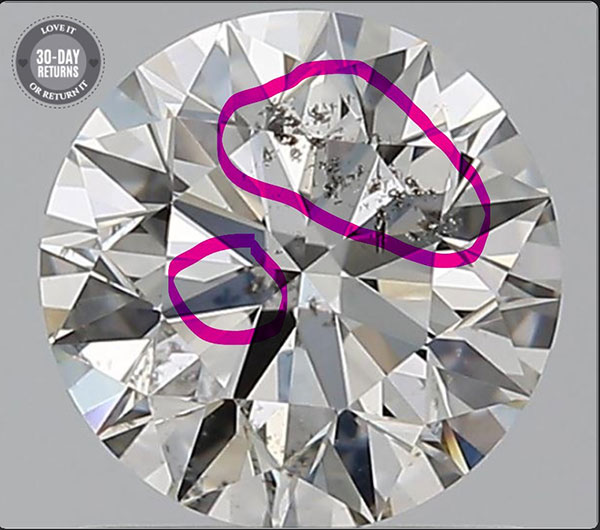 These are carbon inclusions, pretty distracting right?
These are carbon inclusions, pretty distracting right?
While this might be tempting, if you’re searching for a diamond for (THE) ring, the better buy is to get a lab-grown diamond for about the same price, maybe even less, than it’s CE counterpart. I know, I know. Lab grown isn’t the same as a natural, dug-out-of-the-ground diamond in your mind. Well, neither is a Clarity Enhanced diamond. It’s a diamond that has fillers. They aren’t as au-naturelle as you may think. But before we stop there let's learn where to find them and what these CE diamonds actually are.
Where to Find Clarity Enhanced Diamonds
If you’re looking for diamond jewelry in big-box stores (no shame in bargain hunting!) it's pretty common to find clarity enhanced diamonds in two spots: in smaller or colored diamonds, and very large carat diamonds. This is because they are cheaper to the consumer and easier to get big quantities of “junk” diamonds to mass produce product. While the accent diamonds being CE might not be so bad, the other common area we see them are in large (budget friendly) diamonds. Next time you see a 3 or 4 carat diamond at a beyond reasonable price, take a look at the fine print. It’s probably been Clarity Enhanced.
There are a few different kinds of CE procedures but we’re going to focus on the most common two.
The processes used to Clarity Enhance a Diamond
Fracture filling is when there is a fracture (or crack) in the diamond that naturally would show up as a white whisp (called a feather). While it’s not necessarily a dark spot, it’s still going to be noticeable because it will interrupt the flow of light through the stone and prevent you from seeing the fire and brilliance (you know, all the good parts of the diamond). The way to make this appear less noticeable is to inject those tiny fractures with a filling that has almost the same reflective properties as the diamond, so it’s like you’re seeing right through it.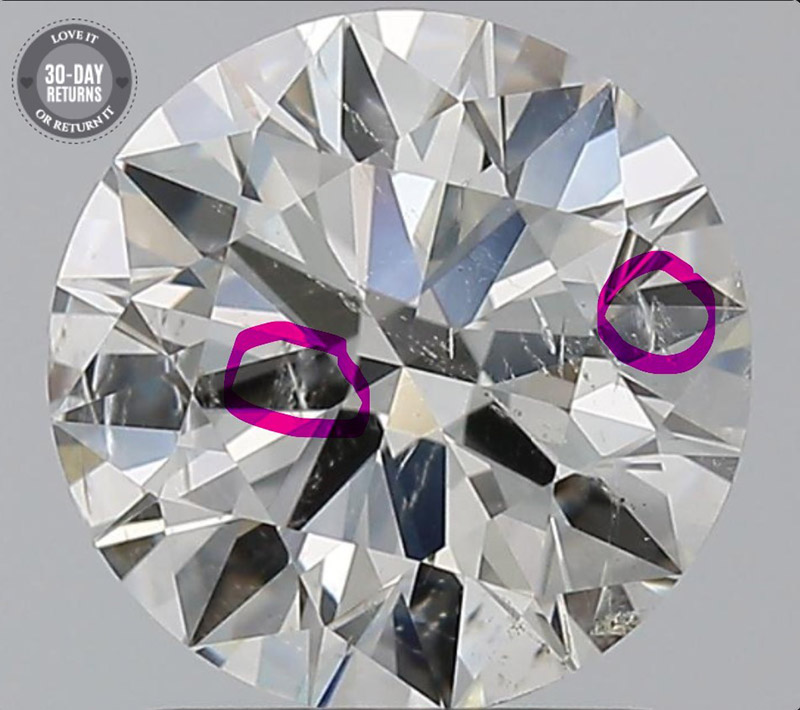 These are feathers, that could potentially be fracture-filled.
These are feathers, that could potentially be fracture-filled.
Laser hole drilling is when there is an inclusion (dark spot) internally in the stone and a laser is used to create a tiny channel to allow a bleaching agent though to dissolve the inclusion.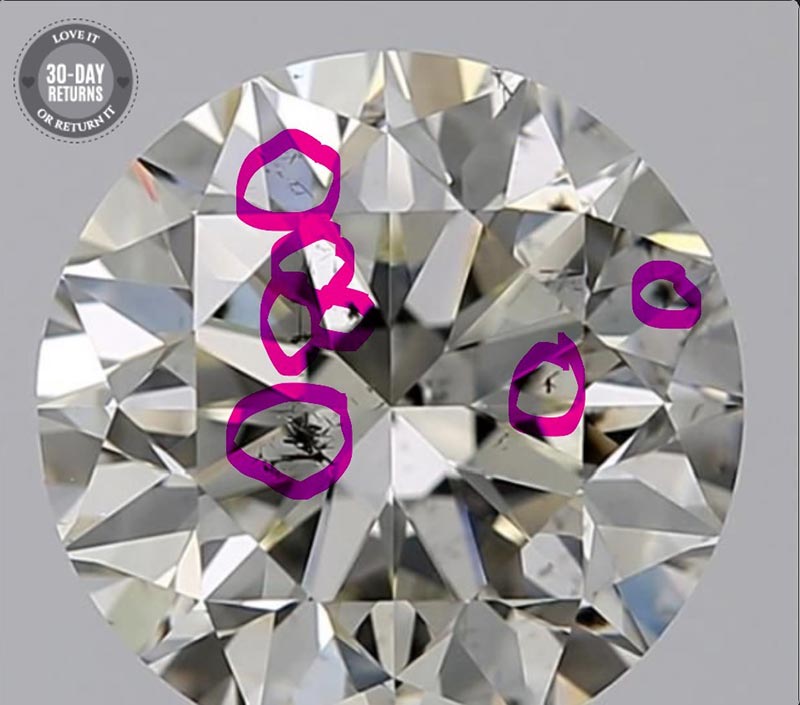 *Carbon inclusions that could be lasered *
*Carbon inclusions that could be lasered *
So How Can You Tell If A Diamond Has Undergone CE?
Legally and ethically speaking, jewelers are required to disclose if a diamond has had enhancements. However, sometimes buyers who are none the wiser are easy targets to forget that information and make them think they are getting a good deal on an amazingly (suspiciously squeaky) clean diamond.
The easiest way to tell, is to hold the diamond under a light source and tilt it. If the diamond has been fracture-filled, it will show flashes of light that stand out from the other reflections of the stone (typically pink or purplish). This happens because the filling has a different refractive index (how the light reflects from the gem back to you) than the diamond. It is close, but not identical.
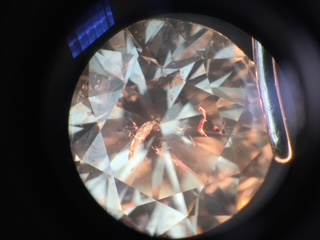
Finding laser drill holes is a little harder. If you look at the diamond using a loupe, (the little one-eye magnifying glass used by jewelers) you can see the tiny drill holes the laser left. Sometimes you may have to tilt the diamond because the facet reflections will hide the holes. Drill holes are not quite as off-putting, because this will make a permanent change to the diamond that in no way can be altered by heat, wear or otherwise like the fraction filling can. However, this is still a stone that was altered. It didn’t come out of the earth this way.

So here is the quick and (mostly) dirty on CE diamonds.
The good: Clarity Enhancing produces diamonds (especially larger ones) as good, eye clean gems for a reasonable price.
Aaaaaand the not-so-good:
You are investing in a diamond that is not good quality to begin with. Diamonds with many inclusions that were laser drilled and not filled could lead to a weaker structure. A stone with a bunch of little hollow tunnels drilled into it is going to not be as sturdy as a totally intact diamond.
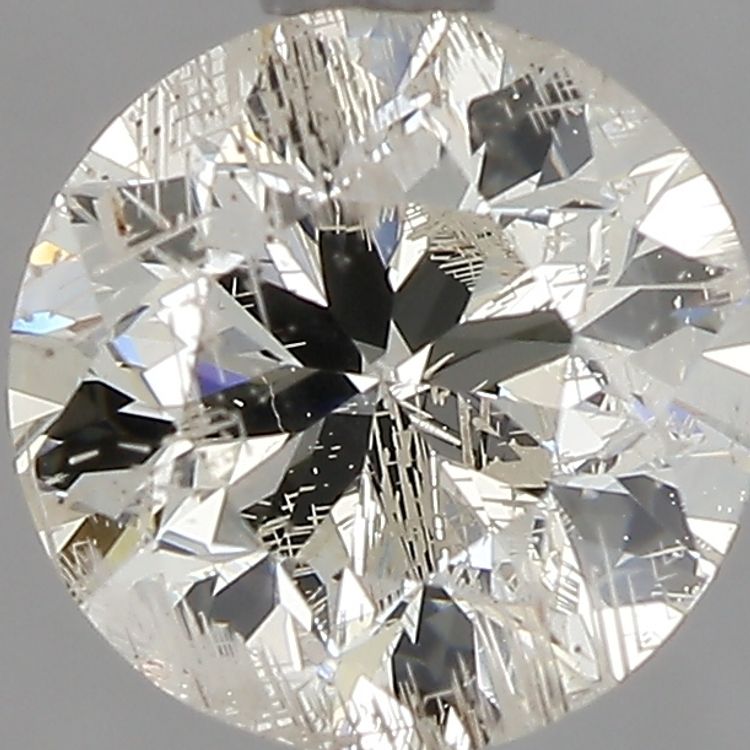
Heat from a jeweler's torch won't harm your untreated diamond, but could (and probably will) cause the fracture filling to bubble and melt out of the fracture. You absolutely have to let your jeweler know of a CE diamond before any repairs. If you forget to or they are careless and heat the stone anyway, you’ll have to have the filling redone.
Over time the filling can discolor. This will make the fracture obvious again. That’s kind of the whole point of getting a CE diamond is to have a perfect diamond and not to see any of its imperfections.
Conclusion:
While you'll end up getting a larger carat stone for your money, you’re not really getting a totally real diamond. These diamonds started out as low quality that wouldn’t have been sellable without some interference. You’ll end up with a diamond that’s really more hassle than it's worth. The fracture filling can discolor or leak out if exposed to heat, so every time you have repairs or cleanings done to your ring you'll have to remind the jeweler. If you really want a larger stone but it's not fitting into your budget, look into lab-grown instead. It's less expensive, going to be more sturdy, last forever and is totally 100% diamond. Just grown in the lab instead of the ground. You’ll still save some money and get a ring you can be totally happy with, without ever having to worry about its secret coming out.

